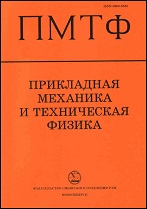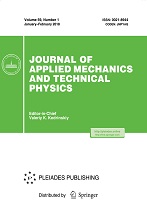|
Acoustic characteristics of the Hartmann whistle with the Helmholtz resonator
Y.-S. Jonga, Y. Hanb, Ch.-Y. Yuna, I.-D. Kima
a Kim Chaek University of Technology, Pyongyang, Democratic People's Republic of Korea
b Pyongyang University of Mechanical Engineering, Pyongyang, Democratic People's Republic of Korea
Abstract:
Based on the turbulence model and the Ffowcs Williams–Hawkings (FW-H) acoustic model, numerical simulations of acoustic characteristics in the Hartmann whistle with the Helmholtz resonator are carried out. The important parameters that control the flow oscillation features of the Hartmann whistle are the stand-off distance, cavity geometry, nozzle pressure ratio, etc. The computational results are compared to experimental data. Under the condition that the jet exit diameter, cavity diameter, nozzle pressure ratio, and stand-off distance remain constant, the mass flow rate and the sound pressure level are calculated as functions of the diameter and length of the Helmholtz resonator. The results show that the sound directivity is similar in the conventional Hartmann whistle and the Hartmann whistle with the Helmholtz resonator, while the sound intensity is higher in the conventional Hartmann whistle. Also, the sound intensity reaches the maximum in the direction perpendicular to the jet. The magnitude of the sound intensity decreases gradually with an increase in the diameter of the Helmholtz resonator, and the decreasing trend in the fundamental resonance frequency is clearly visible. Next, as the length of the Helmholtz resonator increases, the sound intensity first decreases and then increases again. The effect of the resonator length on the fundamental resonance frequency is not large as compared to the resonator diameter.
Keywords:
Hartmann whistle, numerical simulation, Helmholtz resonator, Ffowcs Williams–Hawkings (FW-H) equations.
Received: 01.07.2022
Revised: 26.09.2022
Accepted: 27.10.2022
Citation:
Y.-S. Jong, Y. Han, Ch.-Y. Yun, I.-D. Kim, “Acoustic characteristics of the Hartmann whistle with the Helmholtz resonator”, Prikl. Mekh. Tekh. Fiz., 64:2 (2023), 75–83; J. Appl. Mech. Tech. Phys., 64:2 (2023), 240–247
Linking options:
https://www.mathnet.ru/eng/pmtf1257 https://www.mathnet.ru/eng/pmtf/v64/i2/p75
|


| Statistics & downloads: |
| Abstract page: | 34 | | References: | 16 | | First page: | 5 |
|





 Contact us:
Contact us: Terms of Use
Terms of Use
 Registration to the website
Registration to the website Logotypes
Logotypes








 Citation in format
Citation in format 